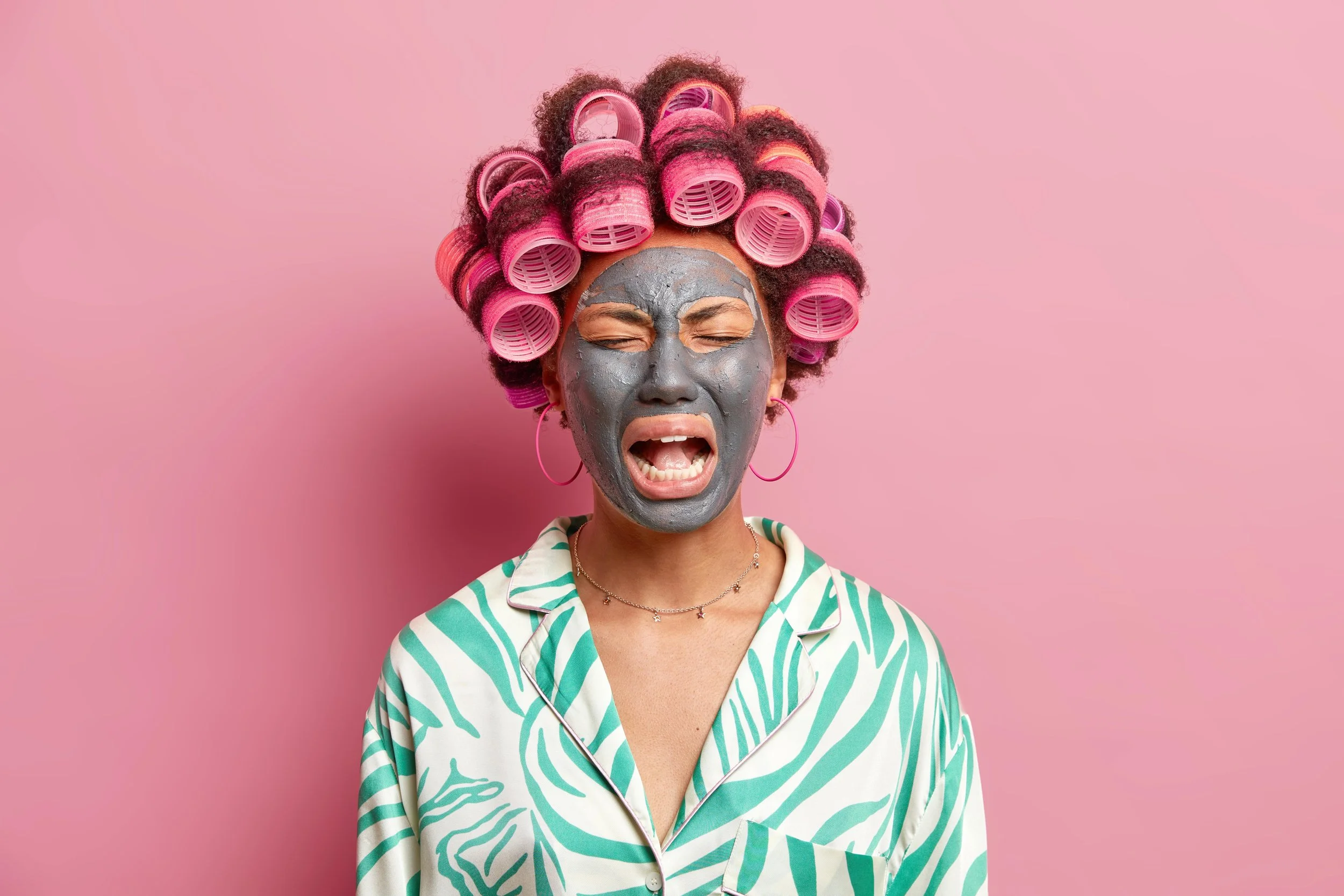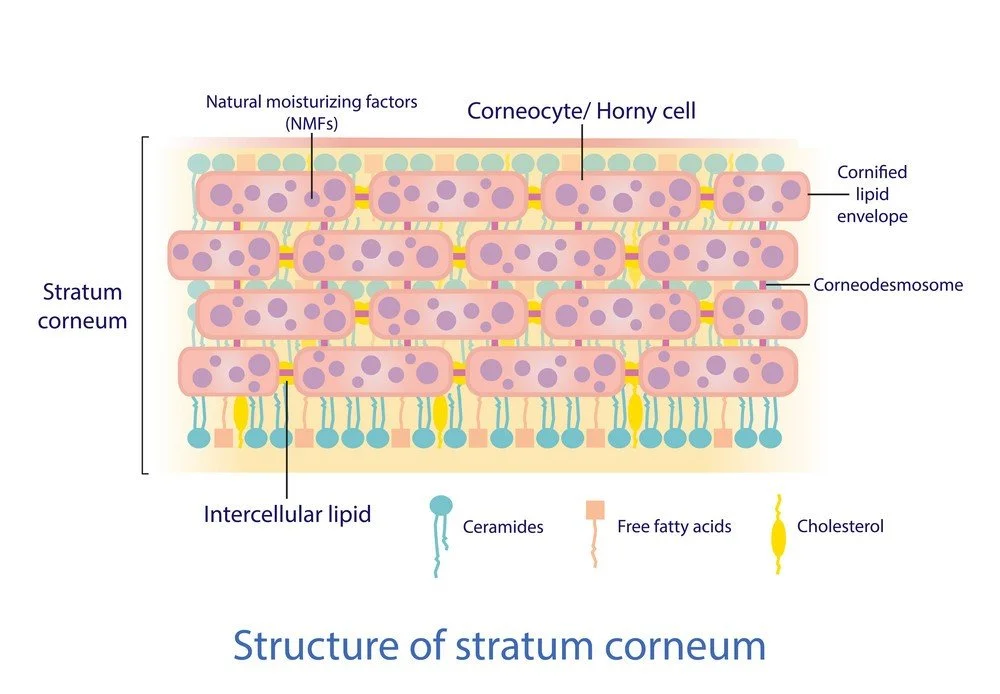How to Rebuild Skin After Over-Exfoliation: What Science Recommends
This post contains affiliate links. As an Amazon Associate, I earn from qualifying purchases—at no extra cost to you. I only recommend products I truly believe in.
💥When Your Glow-Up Backfires
You were just trying to glow. One night you added that glycolic toner. Then a new retinol. Then maybe a “gentle” exfoliating cleanser—because, hey, it said gentle. Fast forward 48 hours and your face feels like it lost a fight with a loofah. It's shiny (but not in a cute glazed donut way), red, stingy, flaky, and basically screaming for help.
Over-exfoliation is the skincare equivalent of burning your tongue on hot pizza: it happens fast, it’s obvious, and you immediately regret your life choices. But don’t panic—your skin isn’t ruined. It just needs a science-backed recovery plan.
In this post, we’re breaking down exactly what happens when you over-exfoliate (spoiler: your skin barrier is not okay), how to fix it using ingredients that dermatologists actually study—not just what your favorite influencer swears by—and which premium products will gently bring your face back to life. If your glow-up went rogue, this post is your reset button.
What Actually Happens When You Over-Exfoliate
So, what’s going on under the surface when your skin suddenly turns from baby-smooth to fire-engine red? You didn’t just “irritate” your skin—you compromised its entire defense squad. Let’s break it down.
Your skin barrier (a.k.a. the stratum corneum) is the outermost layer of your skin. It’s a tightly packed layer of protein-rich cells (technically dead, but very useful!) stacked like bricks and glued together with ceramides, cholesterol, and fatty acids. Its job? To keep moisture in and irritants out.
When you overdo exfoliation—whether it’s AHAs, BHAs, retinoids, or that scrub that feels like ground glass—you strip away too many layers, too fast. Think: sandblasting a wall that wasn’t even dirty.
🧪 Here’s what happens, science-style:
TEWL skyrockets: That’s transepidermal water loss, aka your skin leaking hydration like a broken faucet.
Skin pH rises: It moves from a happy acidic 5.0 to an alkaline mess, which messes with enzymes and microbiota.
Inflammation kicks in: Your skin’s response to injury includes redness, sensitivity, and that signature sting.
Studies confirm it: One paper in the Journal of Dermatological Science found that excessive chemical exfoliation disrupted lipid layers and delayed barrier recovery by up to 48 hours.¹ Another noted that even a single strong peel caused micro-cracks and measurable inflammation.²
In other words? You’ve thrown your microbiome, lipid balance, and healing response into chaos. That’s why even your go-to moisturizer suddenly burns. Your skin isn’t just “sensitive”—it’s injured. And like any injury, it needs triage… not another active.
Signs Your Skin Barrier Is Damaged
Not sure if your barrier is in crisis mode? Here’s the thing: it doesn’t always show up as red, peeling disaster. Sometimes it’s sneakier.
🚨 Common signs your barrier is waving the white flag:
Burning or stinging when you apply even basic products
Sudden flakiness or tightness (especially around your mouth or cheeks)
Redness, sensitivity, or irritation that lingers
Breakouts in places you don’t usually break out
A shiny-but-not-hydrated look (like your skin’s been laminated... badly)
When your skin barrier is damaged, it’s basically leaking moisture like a sieve and letting in irritants that have no business being there. Studies show that impaired barrier function leads to increased transepidermal water loss (TEWL), disrupted pH, and inflammation markers like cytokines going wild.³⁻⁴
Another giveaway? Your go-to products suddenly sting. That niacinamide serum you used to love? Now it feels like rubbing lemon juice on a paper cut. Not cute.
Bottom line: if your skin is acting like a drama queen out of nowhere, odds are your barrier is behind the meltdown. But the good news? It’s fixable—with the right game plan (coming up next).
Step-by-Step Repair Routine
You broke your barrier. It happens. But don’t worry—we’re going full PhD-meets-spa-mode to fix it. This is your four-part recovery plan.
🛑 A. Stop the Offense
First things first: drop the actives. Seriously. No exfoliating toners, no retinol, no acids, no "brightening pads" that tingle like regret. Even your vitamin C serum needs a timeout.
Give your skin a solid 5–7 days of rest—longer if things are really inflamed. This is not the time to “power through.” Think of it like a skincare injury: would you go for a run on a sprained ankle?
Keep your routine ultra-basic:
- A gentle cleanser (fragrance-free, low pH)
- A ceramide-rich moisturizer
- Mineral sunscreen during the day
That’s it. If your routine feels boring, you’re doing it right.
🧱 B. Rebuild the Barrier
Now for the sciencey-good stuff. Your barrier is built on lipids—specifically ceramides, cholesterol, and fatty acids. Together, they form the "mortar" that keeps your skin cells glued together.
Studies have shown that topical application of these lipids—especially in the right ratios—can significantly speed up barrier recovery.
Look for moisturizers labeled "barrier repair" or “lipid-rich.” Bonus points if they also contain soothing ingredients like panthenol, allantoin, or madecassoside.
- Avene Tolerance Control Soothing Skin Recovery Cream
👉 Check price on Amazon - Dr. Jart+ Cicapair Intensive Soothing Repair Cream
👉 Check price on Amazon - La Roche-Posay Cicaplast Baume B5+
👉 Check price on Amazon
💦 C. Hydrate Like It’s Your Job
You need hydration and barrier support. That means layering smart:
- Humectants pull water into the skin (like hyaluronic acid, glycerin)
- Emollients smooth and soften
- Occlusives lock it all in
This combo keeps your skin from drying out while the barrier knits itself back together.
- Vichy Minéral 89 Hyaluronic Acid Serum
👉 Check price on Amazon - Augustinus Bader The Rich Cream
👉 Check price on Amazon - The Ordinary Natural Moisturizing Factors + HA
👉 Check price on Amazon
☀️ D. Protect the Progress
You’re healing. Let’s not undo it with UV damage.
Sun exposure slows down barrier repair and increases inflammation, so daily SPF is non-negotiable—even if you’re indoors or it’s cloudy. Choose a zinc-based, mineral sunscreen to minimize the chance of further irritation.
- EltaMD UV Restore Broad-Spectrum SPF 40
👉 Check price on Amazon - Tatcha The Silk Sunscreen SPF 50
👉 Check price on Amazon
How Long Will It Take to Heal?
The million-dollar question: how long until your face stops acting like it’s allergic to life?
Good news—skin is resilient. If you’ve mildly over-exfoliated (a little redness, slight flaking, some stinging), you can expect noticeable improvement in about 3–5 days. If you went full exfoliation Olympics (think peeling, burning, raw-feeling skin), give it 2 to 4 weeks to fully bounce back.
Why? Because your skin barrier isn’t just a surface thing—it’s a layered structure that takes time to rebuild. Studies show that corneocyte turnover (the skin cell renewal process) averages 28 days, though it slows with age or inflammation.⁸ Recovery depends on how deep the damage went and how consistent you are with your barrier rehab routine.
Here’s the tricky part: don’t rush back to actives the second you think you’ve healed. Wait until your skin is calm, consistently hydrated, and no longer reactive. Then reintroduce one product at a time (every 3–5 days), starting with the gentlest one.
And please, for the love of moisture, patch test. Your barrier just went through something—it deserves a soft re-entry.
Smart Prevention: How to Avoid the Crash Next Time
Let’s make this the last time your face feels like it’s been dragged across a pumice stone, shall we?
The secret weapon: skin cycling. It’s basically a rest-and-repair schedule for your skincare actives—and your barrier will love you for it.
Here’s a basic 4-day cycle that derms and barrier nerds swear by:
Night 1: Exfoliant (AHA/BHA)
Night 2: Retinoid
Nights 3 & 4: Recovery (just cleanse, hydrate, moisturize)
That gives your skin time to repair between “active” nights—and keeps you from layering every acid under the sun like it’s a chemical cocktail party.
Other rules:
Don’t exfoliate and use retinoids on the same night (your barrier will cry)
Listen to your skin → If it’s red, stinging, or flaky, that’s a sign to pause, not push
More isn’t better—exfoliating daily is like waxing your floors every morning. Stop.
The goal is consistent, gentle progress—not overnight miracles that end in a skin spiral. And hey, when in doubt? Moisturize more, exfoliate less.
Final Takeaway
So, you over-exfoliated. Maybe your face went full dragon scale. Maybe it just got a little spicy. Either way, we’re not here to judge—we’re here to rebuild.
Your skin barrier isn’t broken forever. With the right science-backed ingredients (think ceramides, hyaluronic acid, soothing balms) and a little patience, your glow will return—and it’ll be stronger than before.
If you’re ready to heal, start with the basics:
- Gentle cleanse
- Hydrating serum
- Lipid-rich moisturizer
- Mineral SPF (yes, even inside)
Want to Dig Deeper?
Once irritation settles, you can safely reintroduce a brightener, and this plan shows the gentlest options and pacing.
To prevent a rebound dry spell, focus on proven humectants and emollients, which we detail in our research-backed dry-skin relief guide.
When you’re ready to build the routine back up, follow this simple layering order for fewer setbacks.
📚 References
Elias PM, Feingold KR. Skin barrier function. In: Dermatology. 4th ed. Elsevier; 2018:189–197.
Ananthapadmanabhan KP, Moore DJ, Subramanyan K, Meyer F. Cleansing without compromise: the impact of cleansers on the skin barrier and the technology of mild cleansing. Dermatol Ther. 2004;17 Suppl 1:16–25.
Harding CR. The stratum corneum: structure and function in health and disease. Dermatol Ther. 2004;17 Suppl 1:6–15.
Proksch E, Brandner JM, Jensen JM. The skin: an indispensable barrier. Exp Dermatol. 2008;17(12):1063–1072.
Hellemans L, Berson D. Overexfoliation and barrier disruption: molecular mechanisms and clinical implications. J Clin Aesthet Dermatol. 2012;5(4):20–27.
Sugarman JL, Parish LC. The use of ceramides in dermatology. Skin Therapy Lett. 2009;14(7):1–3.
Draelos ZD. The effect of sunscreen on skin barrier repair in patients with photodamage. Cutis. 2005;76(4 Suppl):7–12.
Zlotogorski A. Distribution of corneocyte size in human epidermis. J Invest Dermatol. 1987;89(6):517–521.


